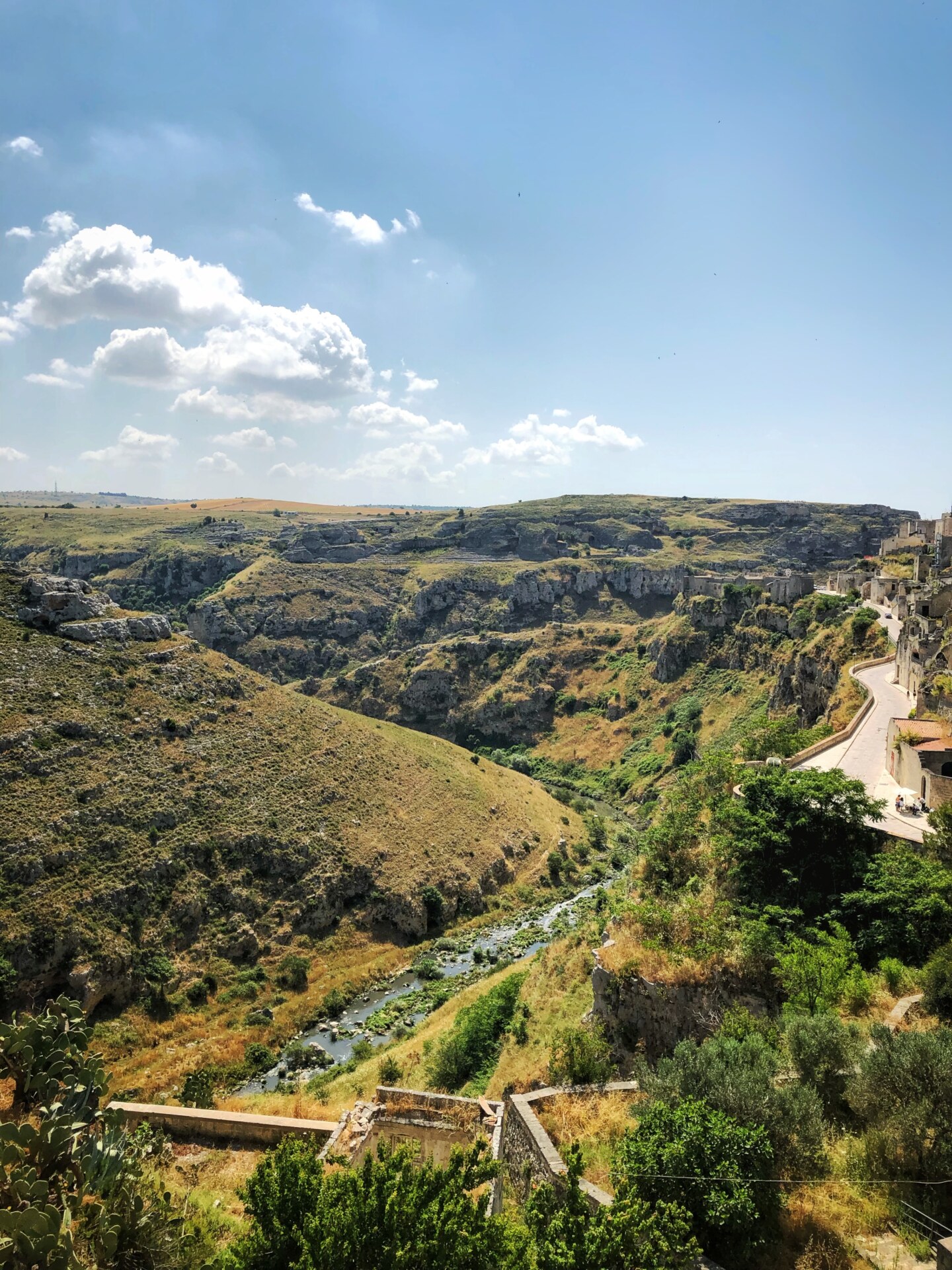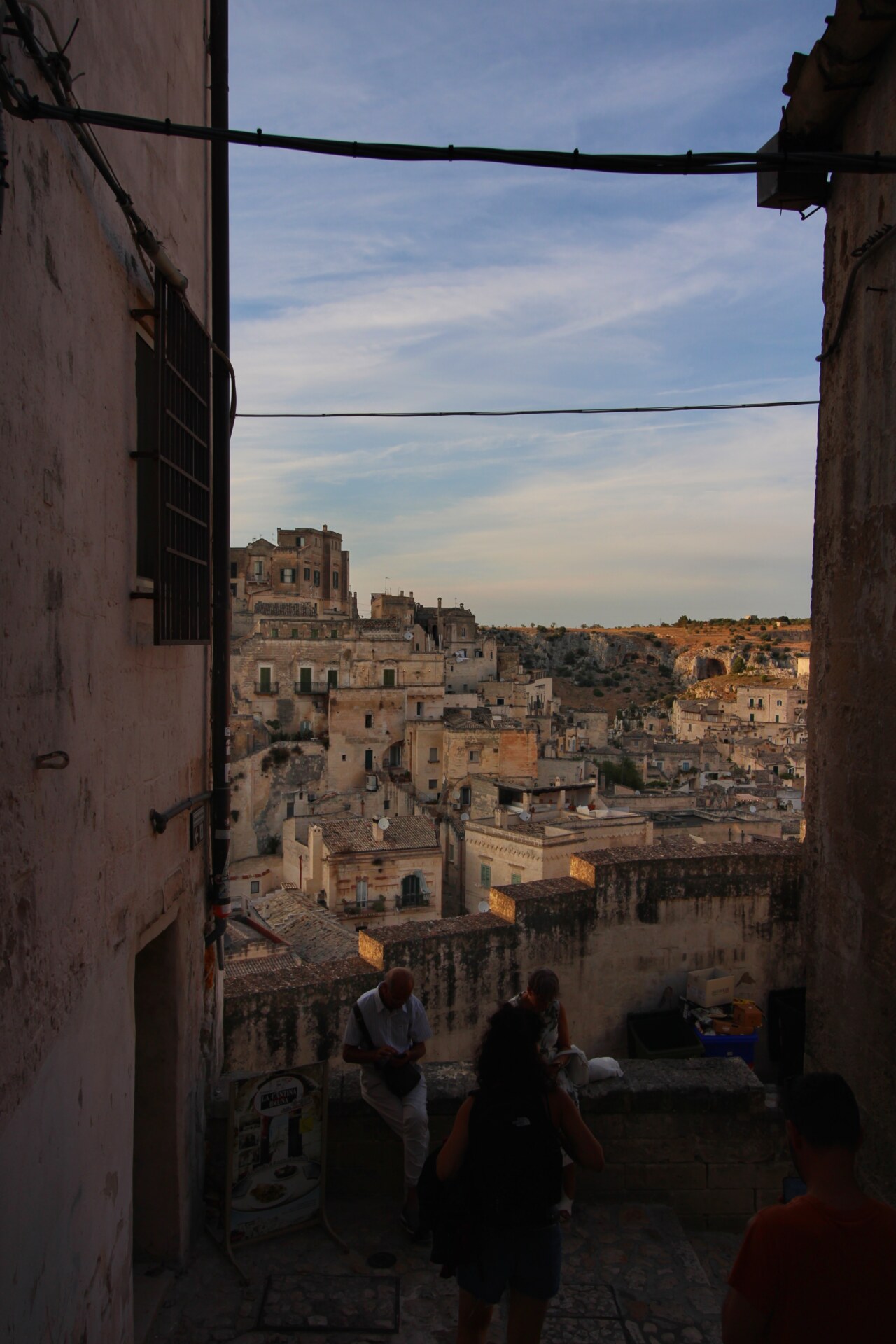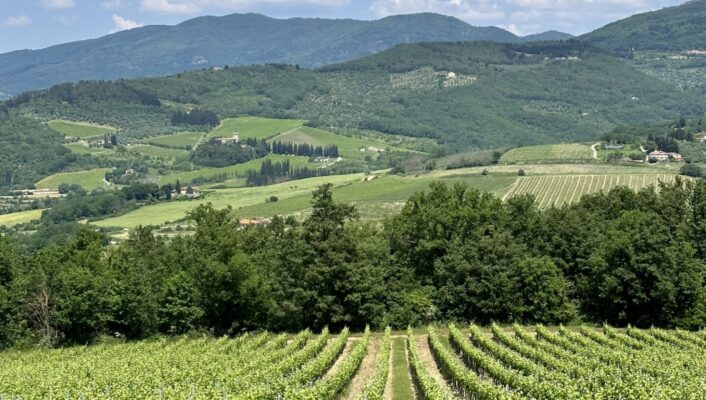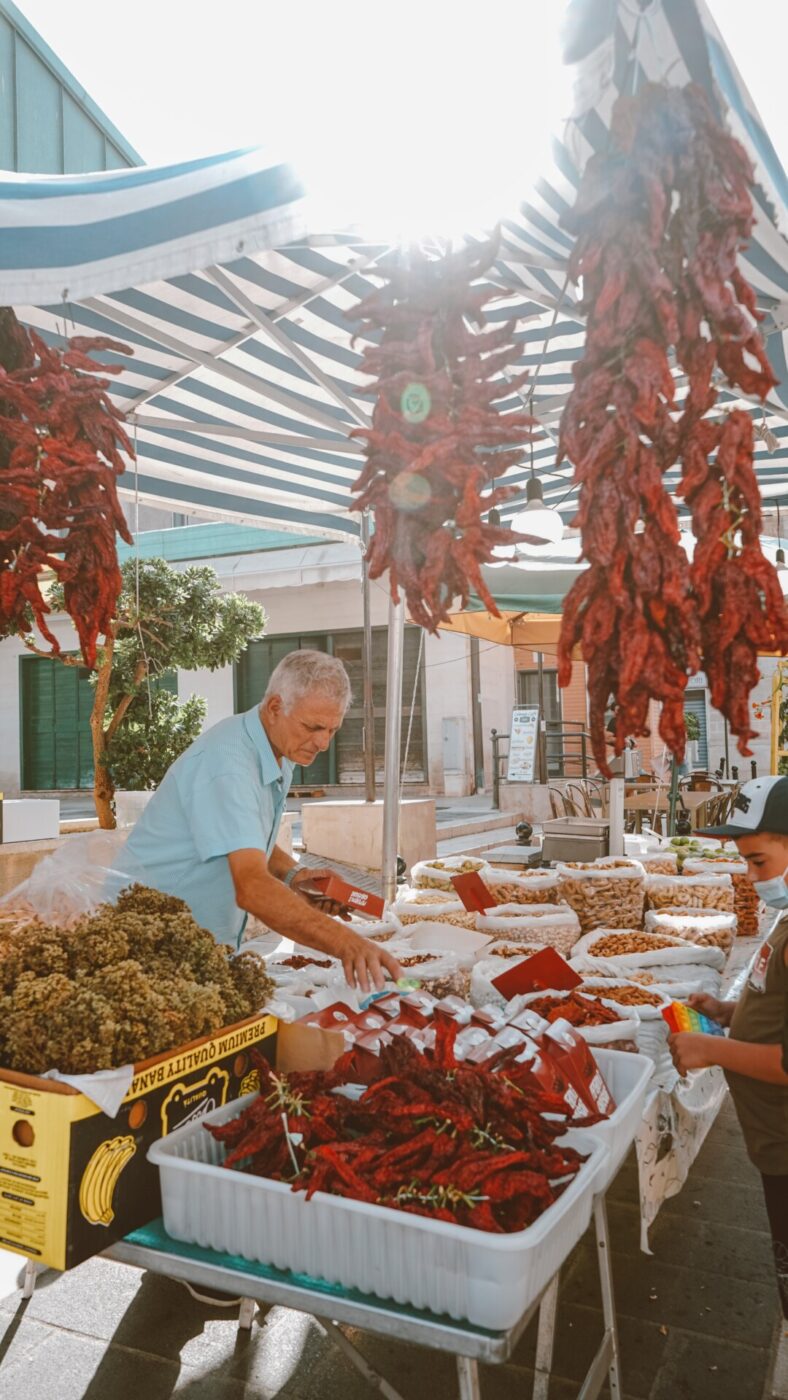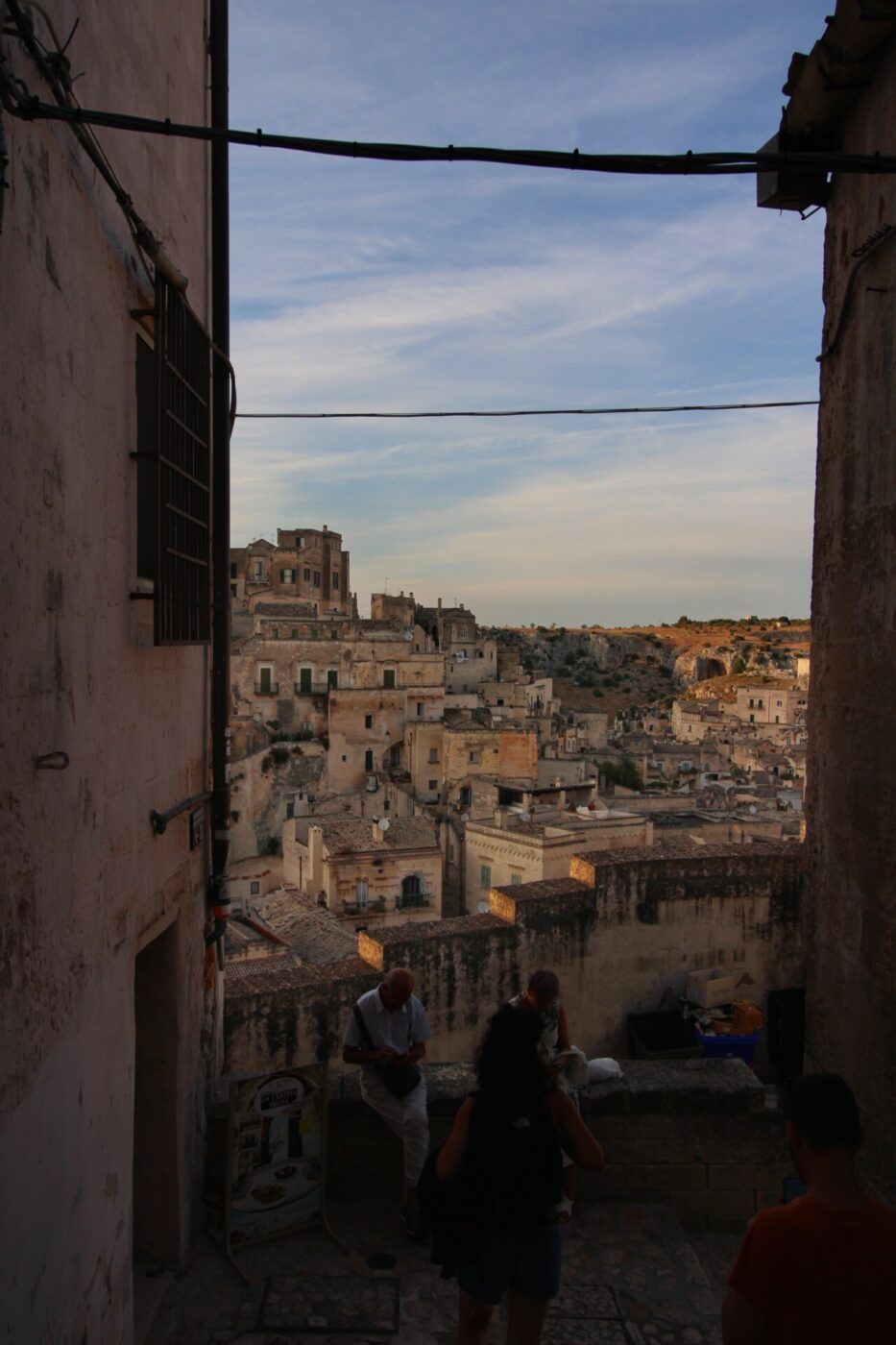Once branded a source of “national shame”, now a UNESCO World Heritage Site and European Capital of Culture, the city of Matera boasts a past with as many twists and turns as the honeycomb of cave dwellings that make up its ancient town, the Sassi.
Situated on the border between Puglia and Basilicata, a lesser-known region in Italy’s deep south, Matera has only gained true international recognition in the last decade or so, previously characterized by its longstanding reputation of destitute poverty. Described by Italian writer Carlo Levi as a “schoolboy’s idea of Dante’s Inferno”, la Città Sotterranea (the Underground City) is made up of stone houses that expand backwards into the rocky cliffside they are cobbled into. Jammed haphazardly alongside and on top of each other, sometimes floor to ceiling, Matera is a tumbling display of domestic life. Look at the city from a distance, and it shifts into one craggy patchworked home, a mass of communal intimacy that sinks deep into the earth around it.
This is a place that has been through a lot. It is the oldest city in Italy, and thought to be the third oldest continuously inhabited settlement in the world, dating back to prehistoric times, when it began as a network of cave dwellings carved into the rock. These formed the basis of the Sassi, the two neighborhoods of cave homes that are riddled into the striking landscape. Over time, the combination of the tightly packed cave system and the city’s severe poverty became a recipe for the quick, deadly spread of disease and famine. Frequently large families shared the same cramped space, sometimes squeezed in alongside their animals, and mortality was rife. “I morti stanno sopra i vivi,” writer Carlo Levi morbidly detailed the living conditions in the Sassi when he visited Matera in the 1940s. “The dead rest above the living.” The crisis was brought to the attention of the Italian government in the 1950s. Their answer was forcefully moving the large majority of the inhabitants into a modern housing development, a decision which effectively destroyed the ancient community and left la Città Sotterranea a ghost town. A brutal end to the city’s historic line of inhabitants, which had been unwavering since it made its prehistoric debut.
Despite Matera’s troubled past, new life has been breathed into its crumbling stone walls. Named a UNESCO world heritage site in 1993, attention to the city’s complex past and extraordinary appearance has been steadily growing ever since, now culminating in a veritable renaissance. Go to Matera today, and see it vibrant and bustling, warm light glowing from windows in the sun-baked rock. Once abandoned cave dwellings have been carefully renovated to home twinkly hotels and bustling restaurants, and a surge of people have moved back to the Sassi with the desire to revive the spirit of the city that was so brutally stripped from it back in the 50s. Matera is one of the fastest growing cities in the south of Italy, with its increase in tourist numbers between 2012 and 2019 the highest nationally, and its number of inhabitants having doubled since the 60s. Its recent scrub up means life there is a far cry from the harsh conditions of its past. Muse over galleries and museums, lazily stroll around its Piazza Vittorio Veneto, or pop into one of its 150 frescoed cave churches. Even James Bond has paid it a visit. (In No Time to Die–head to Via Muro to see one of the film’s most breathtaking shots of the city).

Revived it may be, but Matera’s ancient customs are far from forgotten. Matera’s breadmaking tradition–the celebrated Pane di Matera–has been around for almost as long as its network of cave dwellings. The bread is made according to a traditional process that harnesses the unique, intense flavor of the region’s wheat, and involves natural yeast taken from the fermentation of grapes and figs in local spring water. Lumpy, rough, and charmingly irregular in appearance, the bread is said to resemble the shapes of the neighboring mountains of Murgia. Nothing gets wasted here; when the bread becomes stale, it’s used as a base in traditional dishes such as acquasala, (literally meaning “water and salt”), a mixture of tomatoes, onions, peppers, and eggs. This culinary tradition of la cucina povera is emulated in Matera’s signature dish la crapiata, a simple soup made up of grain and vegetables and drizzled with a healthy dose of olive oil, historically prepared as a celebratory dish for the end of the harvest.
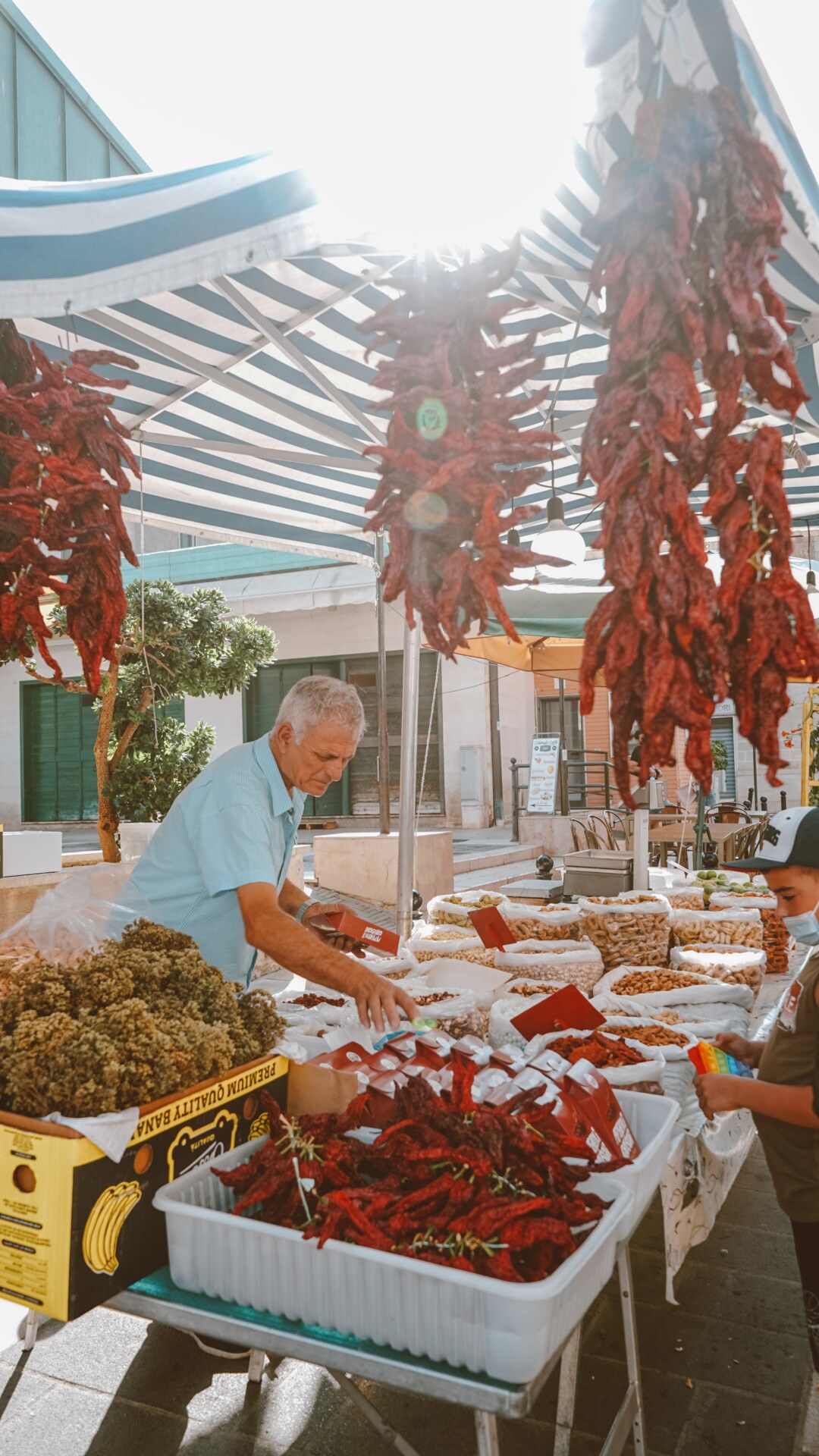
Vendor at Matera market selling pepperoni cruschi
Walk through the streets of the Sassi during the summer months, and you may catch sight of dangling peperoni cruschi, sundried peppers that are a staple of both the region’s culinary and urban landscape. Versatile in their biting smokiness, the cruschi are used in pasta, side dishes, aperitivo style snacks, and crushed as a powder to enhance the flavor of anything from meat to chocolate. Affectionately referred to as the “red gold of Basilicata”, cruschi are draped like jewelry across the towns to dry out during the hottest part of the year, hung in crimson clusters from walls, and strung along windowsills and laundry lines.
Matera is more than the hardship it went through, and the return of human life to the tumbling stone town sheds a new light on the city’s rich cultural history that has been so long overlooked. A new train line starting next year will connect Rome to Basilicata, a sign that the region is slowly but surely opening up and blooming under the financial resources that its new flurry of visitors are providing it. Levi described Matera as a place of “sorrowful beauty”. There is certainly a feeling of quiet mourning that ebbs from the city’s honey-coloured walls, and the difficulties of its past are not to be forgotten. But a quiet persistence thrums through the winding streets of the Sassi too, the beating sound of a life-source. The oldest city in Italy has been resurrected, and it is making quite the comeback.

Courtesy of Sextantio Le Grotte Della Civita
A BRIEF GUIDE TO MATERA
Here, a few IS-approved recommendations on where to eat, drink, and sleep in this ancient city.
EAT
Regiacorte – This upscale spot in central Matera with a la carte and tasting menu options offers refined versions of traditional dishes. Head up to the terrace for expansive views of the city.
Dimora Ulmo – In a bright, modern space, this tasting-menu-only restaurant is housed in an 18th-century palace. Here, the food is Italian, but with global influences–what they call “contamination of Italian cuisine”. Reservations required.
Baccanti – In the underground cave or on the stone terrace, indulge in classics with a twist at this top-end establishment, which also boasts an ample wine list.
Da Nico – Come to this restaurant with ample outdoor seating for hearty grilled meats and pasta plates. The ingredients are all sourced locally, with lots of specialities from Slow Food Presidia.
Stano – This rustic-chic restaurant serves local plates with tasting menu options. Don’t miss the Vermicelli al San Giovannino, with tomatoes, capers, and anchovies.
I Vizi degli Angeli – This artisanal gelateria just down the street from the Museo Nazionale di Matera serves up the best scoops in town with a focus on purity of flavor. The granita options are also fantastic–and the perfect antidote to a southern summer’s day.
DRINK
Enoteca Dai Tosi – This wine bar, built into a centuries-old cave in the Sassi, serves Italian labels alongside local Lucanian cuisine. The fabulously cool stone furniture and chic green accents feel straight out of a James Bond movie.
AREA8 – A bar with a great vibe! Vintage signs, killer drinks, oldies playing gets you in the mood to groove!
SHOP
TAM – The bookstore of Matera’s contemporary art museum got its magazine and prints selection on point.
SLEEP
Sextantio Le Grotte Della Civita – This minimalist hotel, composed of 18 cave rooms, is the best place to sleep in the Sassi. Here, the focus is on respecting cultural heritage; as part of their careful restoration process, most furniture is built out of the stone, while the rest is constructed from recycled materials.


